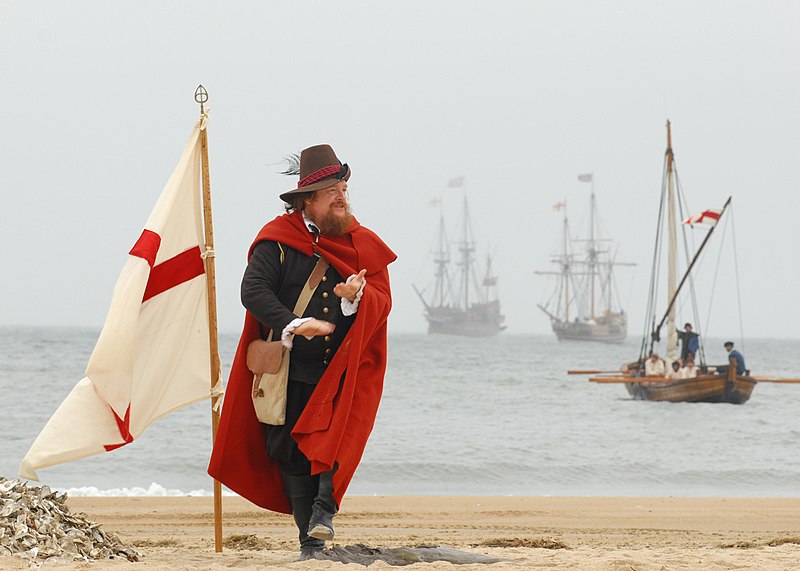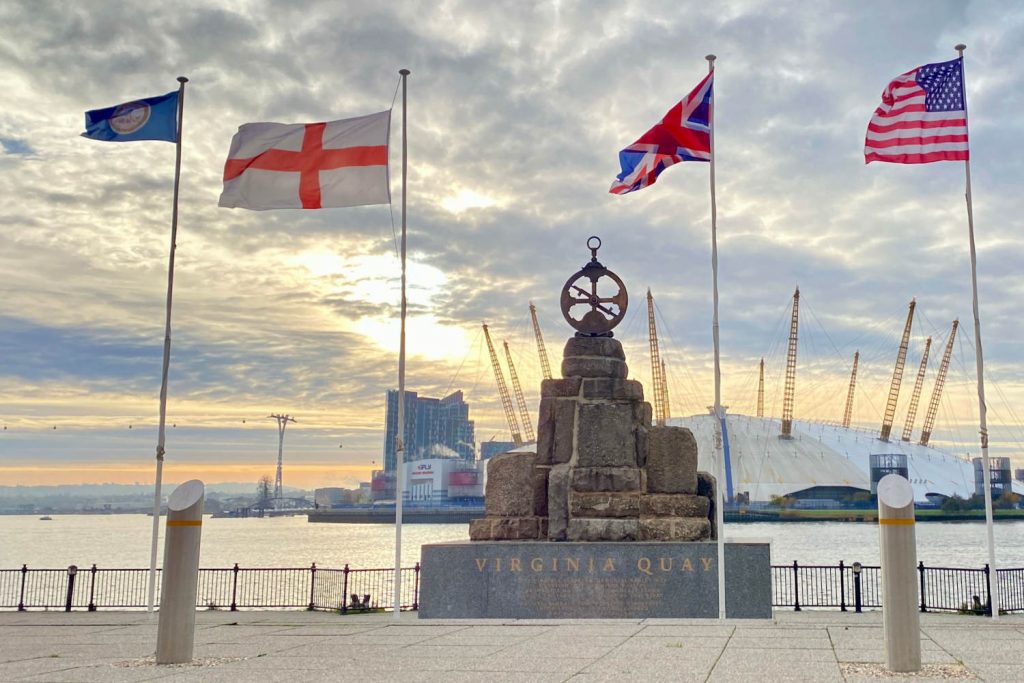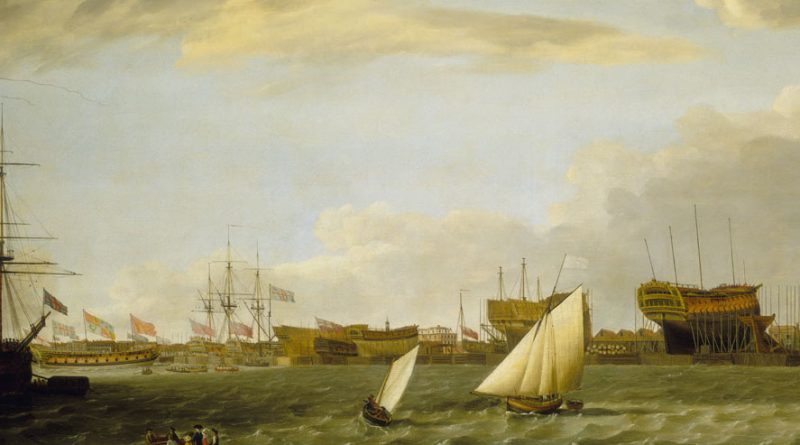From Blackwall to Jamestown: England’s first colony in America
When you think of the United States of America, Blackwall may not be the first thing that jumps to mind. But our part of London played a key part in America’s foundation.
Walking along the Thames in Blackwall you will find a memorial with an American flag and the flag of the US state of Virginia fluttering in the wind. They mark where the expedition that founded England’s first permanent colony in America, Jamestown in Virginia, set sail over 400 years ago.
The Voyage
In the early 1600’s Blackwall was barely part of London at all. One long path connected the hamlet on the edge of the city, surrounded by marshland, to the rest of Poplar. Despite this, it was already a bustling hub for ships.
A few days before Christmas in 1606 three ships, the Susan Constant, Discovery, and the Godspeed set off from here for the New World. They carried 105 colonists. All men and boys.
The expedition was led by the one-armed Christopher Newport, a native of Limehouse.
Perhaps a sign of what was to come, the voyage did not start well.
They spent six weeks still in sight of England because of poor wind. After stops in the Canary Islands and West Indies, they finally reached Virginia after more than four months at sea.
At the first landing, Newport raised a cross claiming the land for England. He read out the sealed orders they had been given before leaving Blackwall.
The expedition organisers, the London Company, instructed the colonists to find a location inland that was accessible by river and easy to defend from other European powers.
Profit was a key motive, as merchants and investors funded the London Company with the expectation of a return on investment. The colonists were also instructed to carry out activities such as searching for gold.

Founding Jamestown
True to their orders, the colonists chose an inland peninsula reached by a river deep enough to dock ships as the spot to found the new colony.
It was named Jamestown after the King of England James I.
The local Native Americans, mainly from the Powhatan Confederacy, were not settled on the Peninsula because it was swampy land that had few large animals to hunt and hard to cultivate for crops.
Unsurprisingly, the new colonists had a difficult time. Soon they were experiencing sickness spread by the insects also calling the swampy peninsula home, and struggling to grow food.
Amongst the colonists was John Smith, the husband of Pocahontas in the Disney Movie.
In real life, Pocahontas did know the Jamestown colonists through their sometimes violent sometimes peaceful interactions with the Powhatan Confederacy. However, while she did meet Smith, she did not marry him.
In a book he wrote in 1624, Smith described the conditions at Jamestown: ‘within ten dayes scarce ten amongst us could either goe, or well stand, such extreame weaknes and sicknes oppressed us…
The situation only worsened. Soon food was so limited they were eating ‘halfe a pint of wheat, and as much barley boyled with water for a man a day and this having fryed some 26. weekes in the ships hold, contained as many wormes as graines’.
According to Smith: ‘From May, to September… fiftie in this time we buried,’
Success of the Colony
As a financial endeavour for the London Company, Jamestown was a failure. The gold shipped back by the settlers turned out to be worthless iron pyrite, better known as fool’s gold.
Facing the terrible conditions described by Smith, the colony relied on supply missions from England bringing more food and colonists to survive.
In 1610 after the ‘starving time’ when the colony population shrunk from about 500 to 61 over one winter of extreme starvation they abandoned the colony. However, by chance they encountered a supply mission and returned to the colony.
Importantly, amongst the supply mission was John Rolfe (who actually did marry Pocahontas) who brought with him a new strain of tobacco. It became a key export for Jamestown and essential to their survival.
Despite all the difficulties they faced, the colony succeeded where many others had failed and were able to persevere.

Virginia Quay Memorial
Jamestown is key to American history. If it failed, the emergence of British America and eventually the United States may never have happened. Yet there is little remembered about it in the UK.
But there is the Virginia Quay Memorial in Blackwall.
In 1928, a plaque was placed on the nearby dock master’s house, but World War II heavily damaged this area. Fortunately, the plaque was saved and included in a monument at the Brunswick Wharf Power Station when built it in 1951.
When Barratt Homes developed the site into housing in 1999, they themed it around the association with Virginia and Jamestown. They named the development Virginia Quay, and they chose road names like Jamestown Way.
The developers preserved the memorial, mounting it on a new pedestal facing the Millenium Dome across the river. A mariner’s astrolabe was added to the top to replace a mermaid that had long been stolen.
Four flagpoles fly the flags of the USA, UK, England, and the State of Virginia.
If you enjoyed this article try reading: The Story of Limehouse’s Lost Chinatown

